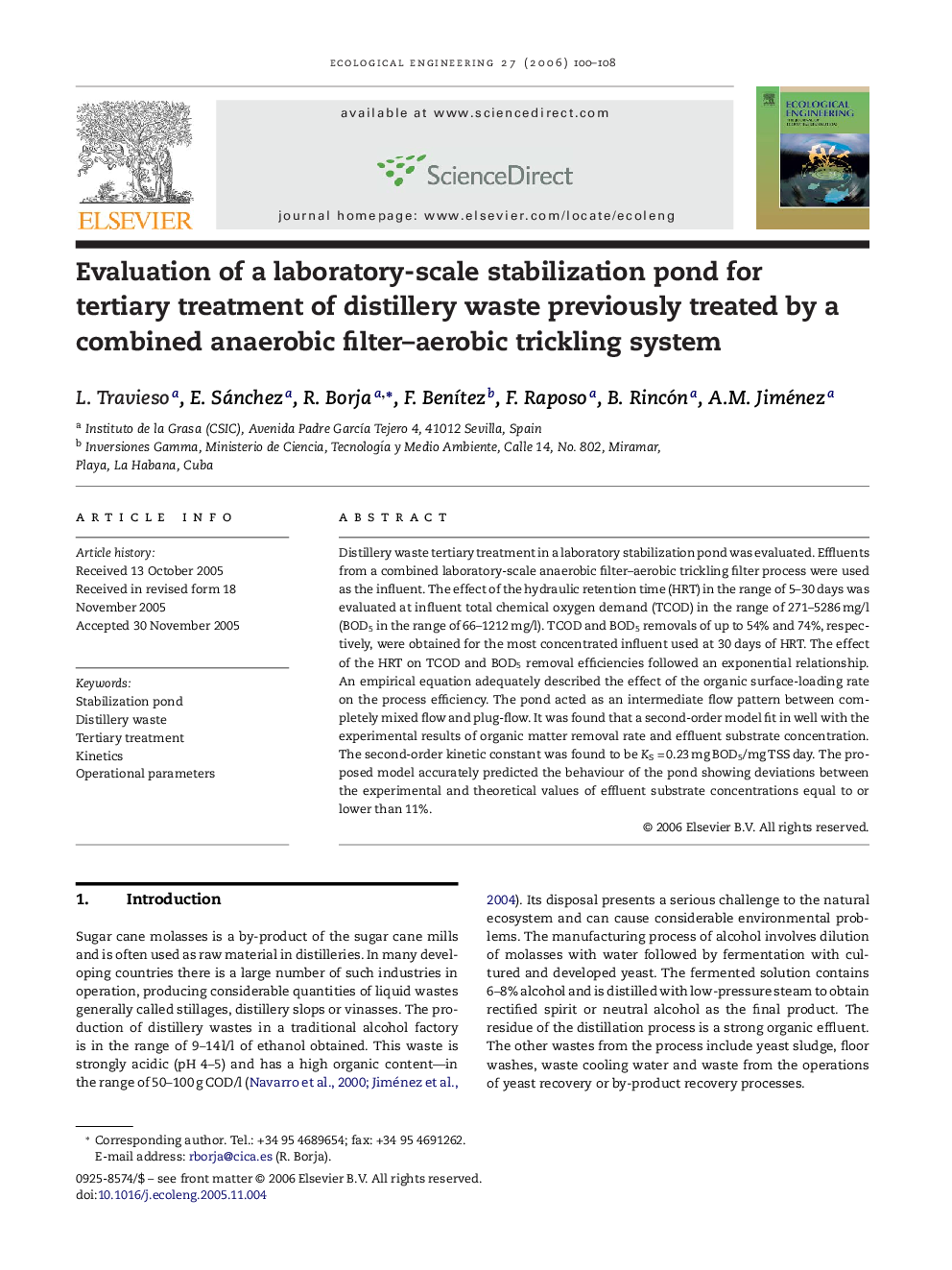| Article ID | Journal | Published Year | Pages | File Type |
|---|---|---|---|---|
| 4391264 | Ecological Engineering | 2006 | 9 Pages |
Abstract
Distillery waste tertiary treatment in a laboratory stabilization pond was evaluated. Effluents from a combined laboratory-scale anaerobic filter-aerobic trickling filter process were used as the influent. The effect of the hydraulic retention time (HRT) in the range of 5-30 days was evaluated at influent total chemical oxygen demand (TCOD) in the range of 271-5286 mg/l (BOD5 in the range of 66-1212 mg/l). TCOD and BOD5 removals of up to 54% and 74%, respectively, were obtained for the most concentrated influent used at 30 days of HRT. The effect of the HRT on TCOD and BOD5 removal efficiencies followed an exponential relationship. An empirical equation adequately described the effect of the organic surface-loading rate on the process efficiency. The pond acted as an intermediate flow pattern between completely mixed flow and plug-flow. It was found that a second-order model fit in well with the experimental results of organic matter removal rate and effluent substrate concentration. The second-order kinetic constant was found to be KS = 0.23 mg BOD5/mg TSS day. The proposed model accurately predicted the behaviour of the pond showing deviations between the experimental and theoretical values of effluent substrate concentrations equal to or lower than 11%.
Related Topics
Life Sciences
Agricultural and Biological Sciences
Ecology, Evolution, Behavior and Systematics
Authors
L. Travieso, E. Sánchez, R. Borja, F. BenÃtez, F. Raposo, B. Rincón, A.M. Jiménez,
